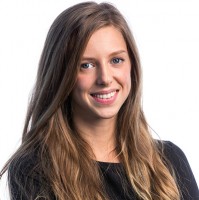Equipment
Here Are Our Top Ten Favorite Products of the Last Ten Years

With the recent celebration of being ten years in business, there is a sense of nostalgia throughout the office. What started as an idea by Roger, and a small garage full of camera gear, turned into an incredibly successful business that has been able to help and service millions of photographers in the industry. But the business at LensRentals.com hasn’t been the only thing that has changed considerably over the years, the world of photography and videography has as well. So when coming up with an idea on how to highlight the last ten years of camera and optic innovations, we decided to build a list of our favorite products that have been announced in the last ten years.
Not only are we staffed by experts in the field of photography and video gear, we also staff a considerable amount of photographers and videographers – each with their own unique styles and preferences. What we’ve found, is that there is no right piece of gear for everyone, and we all have varying tastes and expectations when it comes to gear. So while building a comprehensive ‘Top Ten’ list, we ran into a variety of opinions. After some long discussions, here are our collective top ten products in photography and videography over the last ten years, in no particular order.
Top Ten Gear of the Last Ten Years (In No Particular Order)
Pentax 645Z Medium Format System |
|
|---|---|
 |
The anti-cell phone camera. Yes, it has some shortcomings compared to a $45,000 Phase or Hasselblad, but it’s 15% of the price and has a decent selection of relatively reasonably priced lenses. Proportionately, that’s like being able to buy a nice full-frame SLR for $450. Of course, not everyone wants or can afford medium format, but it makes it an option for a lot of people who otherwise wouldn’t have that option. A year from now I might be putting the Hasselblad X1D-50c in place of it, but not until I see if Hasselblad has begun to solve their lens problems. |
| Roger’s Take | |
 |
If the Pentax 645Z should be remembered for anything, it’s how it made Medium Format practical in a digital era. Sure, Phase One and Hasselblad still exist, and are more common in the industry than ever, but Pentax was really able to break the ground and show people what medium format systems were capable of, without breaking the bank (in comparison to Hasselblad’s and Phase One Systems). It misses some key features, like a modular body, and the lens lineup is pretty lackluster by comparison, but the system give’s people an opportunity to see what that Sony 50MP 44MMx33MM CMOS sensor is truly all about. |
| Zach’s Take | |
Leica SL Typ 601 |
|
|---|---|
 |
Usually the word “new” when associated with Leica cameras indicates a slightly different surface finish or that one of the already few features has been removed. Leica has, after all, been tweaking the rangefinder camera for over a century now. The introduction of the Leica SL (Type 601), in 2015 was perhaps a necessary change from the company’s norm, one that might enable Leica to be more competitive and utilize now standard technologies in ways that a rangefinder can not. The Leica SL is capable of using any Leica lens (via adapter) including of course the M-mount lenses, as well as R and S lenses. So far the native lenses have proven to have comparable autofocus and stabilization. But the Leica SL (Type 601) carries with it Leica’s propensity for refinement, and it is the intuitive layout that makes this camera so enjoyable. Versatility? Absolutely. Features? As should be expected, but chosen carefully. |
| Aaron’s Take | |
 |
The Leica SL Type 601 is currently my favorite camera available. It looks big and bulky and sort of ugly, but once it’s in the hands, it feels just right. Image quality is excellent, with great dynamic range and noise performance. The EVF is the best one I’ve ever used on any mirrorless camera. I can focus the 50mm f/0.95 Noctilux wide open in a dark bar and nail the focus 70% of the time. Oh, and the ability to use all M-mount lenses on it? Yes, please. |
| Joey’s Take | |
Canon 11-24mm f/4L |
|
|---|---|
 |
Before the Canon 11-24mm f/4L came out, Canon had nothing that could compete with the Nikon 14-24mm f/2.8. They made this lens even wider with image quality that is just as impressive all the way to 11mm. Yes, it’s big and front heavy, but when you need to get really wide without the fisheye distortion, this lens is the one to grab. |
| Sarah’s Take | |
 |
The Canon 11-24mm f/4L was a game-changing lens when it was first released, and so far nobody else has really competed. There are lenses nearly as wide, but nothing nearly as wide that is so breathtakingly sharp. It’s not an everyday lens, of course, but it provides a completely different look and perspective for those who take the time to master it. It’s a lens I think about whenever a bunch of us are photographing the same thing because the photos I take with it make that thing look different than the photos everyone else took. |
| Roger’s Take | |
Freefly Movi M5 |
|
|---|---|
 |
In the Spring of 2013, Freefly Systems shook the filmmaking world with the introduction of their M?VI M10 stabilizer. Since that time, the design has inspired innumerable imitators, none of which live up to the nimble performance of their original. However, it is our opinion, that Freefly Systems ultimately perfected the design with their M?VI M5 that followed in 2014. The Movi M5 reduced the overall size and weight of the gimbal, without sacrificing performance. On the contrary, many happy users have found the Movi M5 much more capable than its larger siblings (M10/M15). If a camera can be hacked onto it, the M5 will fly it better than any other gimbal on the market. |
| Kris’ Take | |
 |
I’ve only been working at Lensrentals for two years, so I wasn’t around for video milestones like our first audio recorder or cinema camera, but I’d been here about three months when we started carrying the Movi M5, and it felt like a pretty big step. At the time, the Movi was the only handheld motorized gimbal, and it changed the way a lot of people shoot video. After a couple years and countless imitations, it’s still probably the best gimbal on the market, and it’s still really fun to use. |
| Ryan’s Take | |
 |
I remember when the Movi M10 was announced, and the little promotional video put together by Vincent Laforet was released. Everyone on my social media collectively lost their minds as the possibilities this new stabilizer could bring. Since it’s announcement, steady cam operations have truly gone to the next level and pieces like the Movi M5 make it possible, allowing for some silky smooth camera operation in situations never really seen before. |
| Zach’s Take | |
Canon EF 400mm f/4 DO IS II |
|
|---|---|
 |
The Canon EF 400mm f/4 DO IS II is not your grandfather’s DO lens. Every other diffraction optics lens ever made has been an optical compromise of some degree that we accepted because the lens was so much smaller and lighter than it would be without diffraction optics. This one is as sharp and contrasty as a regular refractive lens, but still significantly smaller and lighter. It’s lighter, about the same price, and arguably of better image quality than a Canon 300mm f/2.8 with a teleconverter. This has never been done before, and rumor has it may never be done again. If that’s the case this will be a collector’s item, similar to the old Canon 200mm f/1.8. |
| Roger’s Take | |
 |
The Canon 400mm f/4 DO IS II is a lens you have to see to truly appreciate. It’s a 400mm lens I can actually hold. And unlike the previous version, this lens has great contrast and clarity. This is the perfect lens for wildlife or sports shooters who are traveling or are getting up there in age (like Roger). |
| Sarah’s Take | |
Canon 5d Mark III |
|
|---|---|
 |
After their previous entry to the 5D line of professional DSLRs started a digital cinematography coup, Canon had customer’s expectations quite high for a follow-up. Pre-release rumors swirled with video-centric features such as Raw codecs, high frame-rate acquisition in HD, and continuous auto-focus. In early 2012 Canon delivered the 5D Mark III, a camera with none of those features. Needless to say, early buzz was polarized, to say the least; nevertheless, the camera proved to be a solid performer, quickly overtaking the 5D Mark II. Its success highlights one the best qualities of Canon cameras, a devotion to prioritizing reliability over all else in their design. |
| Kris’ Take | |
 |
I’m not a super-experienced or highly-skilled still photographer, especially compared to many of my co-workers. I dabble, though, and when I do, I usually rent a 5D Mark III. Not because it’s objectively the best camera we carry, or the most exciting, but because I’ve shot with it enough that I can finally operate it without fumbling. There’s something to be said for sticking with a camera until you know it by heart. Plus it’s like always in stock – purely because of the number of units we carry. |
| Ryan’s Take | |
 |
I continue to use the Canon 5d Mark III more than any other. When it was new, it completely upgraded my DSLR shooting experience with amazing low light performance paired with Canon L series glass. Not to mention a beautiful rear display. I still use it because the image quality is great for what I need while keeping the file sizes manageable. This camera has been the long time favorite of our wedding and portrait customers. |
| Sarah’s Take | |
Sigma 24-35mm f/2 DG HSM Art Lens |
|
|---|---|
 |
The Sigma 24-35 f/2 is unique for a modern zoom. The short focal range is an interesting compromise to achieve the open aperture of f/2, where most “fast” zooms only achieve f/2.8. It covers the three classic wide angles (24, 28, and 35) leaving those situations requiring longer focal lengths, often portraiture, to faster primes that will offer a narrower depth of field. The image quality at the extremes of the focal range is also very consistent, as there is less to balance out optically. I think of it not so much as a short zoom but an extended prime. |
| Aaron’s Take | |
 |
This glass can be half-empty, or half-full. It’s a pretty limited range for a zoom, roughly 1.5X. It’s not as wide an aperture as a fast prime. But it is the first full-frame zoom with a f/2.0 aperture and you have to be impressed when a company does something that’s never been done before. You have to be more impressed when they make it optically excellent. I was certainly ready to say ‘yes, but it’s a full stop wider so we can’t expect it to be quite as good’. But it’s every bit as good as any other best-quality zoom. And far less expensive than any other best-quality zoom. |
| Roger’s Take | |
Profoto B1 AirTTL Strobe |
|
|---|---|
 |
The Profoto B1 Strobe has changed my life as a photographer more so than any other piece of gear made. I’ve always been a Strobist at heart, and prior to the Profoto B1 system, I was often carrying Alien Bee systems on location, along with their massive Vagabond II battery system. Now, I had all that power at my fingertips, in a small and lightweight package. But Profoto also broke ground on being among the first strobes with TTL and High-Speed sync, giving them an edge over just about every other strobe manufacturer ever. |
| Zach’s Take | |
 |
While the Profoto B1 wasn’t the first battery powered strobe we ever carried, it marked a real turning point in quality, reliability, and performance over the competition. TTL and high-speed sync in a 500Ws battery powered strobe compatible with the whole range of Profoto modifiers? Seriously, what’s not to love? And I loved this light a lot, right up until its little brother, the Profoto B2 came along. For my needs, the Profoto B2 is a better option, but most of our clients need the extra power the Profoto B1 can deliver. |
| Joey’s Take | |
Sony a7R Mark II |
|
|---|---|
 |
The Sony A7R II is my second favorite camera available, and the one I shoot with the most. The small size makes it easy to travel with, especially when I go camping and hiking or when I go urban exploring. The high resolution combined with the great low light capabilities of the backside illuminated sensor are a dream combination for all my late night shooting for my personal work. And the in-body stabilization is a godsend. |
| Joey’s Take | |
 |
It’s pretty simple: 42 megapixels, 5-axis in-body image stabilization, 4K video, and hybrid autofocus at a reasonable price. Add to that faster burst shooting, reduced shutter vibrations, and electronic first curtain and you have a game-changing camera. It’s a big improvement over the Sony A7R, which was a big improvement over the Sony A7. I love the Sony A7r II camera for what it is, and also for the rate of improvement, which makes me a little giddy thinking about what the A7R III might be. |
| Roger’s Take | |
Canon 5d Mark II |
|
|---|---|
 |
In 2008 the cheapest large sensor digital cinema cameras were tens of thousands of dollars and weighed 20+ pounds. Canon’s decision to add 1080/24p video recording to one of their still photography cameras changed the world. The 5D mark II upended an industry, launched careers, changed attitudes, and altered the look of cinematography for the next decade, all on its own. It is one of the most important cameras in history. |
| Kris’ Take | |
 |
The Canon 5d Mark II was the first full frame digital camera I ever owned. I bought it shortly after it’s announcement in 2008, and it was really a groundbreaking piece of equipment for its time. Being the first Canon DSLR with video capabilities, the Canon 5d Mark II can really be credited for the DSLR videography boom that took place after it’s announcement. Suddenly, shows like House, and movies like Black Swan and Captain America were able to harness the power of the Canon 5d Mark II, bringing professional level video camera capabilities in a small, and affordable package. While it’s a bit old now, it’s impressive to know that a camera nearly ten years old can hold up to the standards of this ever-developing industry. |
| Zach’s Take | |
What do you think of our list, was there any big surprises as to what we’ve decided on? Over the last ten years, the photography and videography industries have changed faster than ever before, so some pieces of gear had to be left out on our list. If you have anything that you’d like to add, please do so in the comments below, and we look forward to another ten years of being your source for gear rentals and expert advice!
Author: Lensrentals
Articles written by the entire editorial and technical staff at LensRentals.com. These articles are for when there is more than one author for the entire post, and are written as a community effort.
-
Eloise
-
Eloise
-
Diko Jelev
-
Gabriel
-
Harold Mayo
-
Roger Cicala
-
Elliott Anderson
-
Chef Shawk Parson III
-
Chef Shawk Parson III
-
Chef Shawk Parson III
-
Chef Shawk Parson III
-
Chef Shawk Parson III
-
Jon
-
Chris Daigle
-
Carl Eberhart
-
Roger Cicala
-
Jon
-
David Peterson
-
David Peterson
-
David Peterson
-
Ruy Penalva
-
John Gaylord
-
Laurence J Segil
-
Wilson Laidlaw
-
Edna Bambrick
-
Falk Lumo
-
Mel Bourne
-
Harold Mayo
-
Drumcrusher
